People
Flight Crew
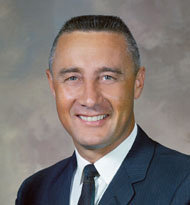 Virgil I. “Gus” Grissom
Command Pilot
Virgil I. “Gus” Grissom
Command Pilot
- 38 years at launch
- 100 combat missions
- 3 NASA missions
Gemini 3 was Gus Grissom’s second spaceflight, making him the first man to fly in space twice. As one of the original Mercury Seven he’d been part of NASA’s crewed spaceflight program since it began in 1959, and was involved in the Gemini Program from the start, helping to design the flight control systems. He continued to work on the program until 1966 when he was selected to command the ill-fated Apollo 1 mission.
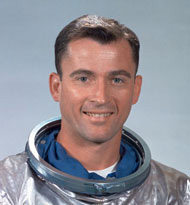 John W. Young
Pilot
John W. Young
Pilot
- 34 years at launch
- 835 hours in space
- 6 NASA missions
John Young was a test pilot in the United States Navy before he joined NASA as part of Astronaut Group 2 in 1962. Gemini 3 was Young’s first spaceflight, and he was famously responsible for smuggling a corned beef sandwich aboard. In spite of the sandwich incident, Young went on to have a long and successful career at NASA during which he walked on the moon and commanded the first Space Shuttle mission, STS-1.
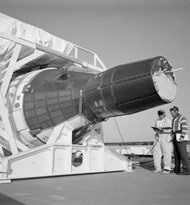 Molly Brown
Spacecraft
Molly Brown
Spacecraft
- 292 hours in space
- 3.2 mass (metric tonnes)
- 224 apogee (km)
Molly Brown was the Gemini 3 spacecraft; Gus Grissom named it after the Broadway musical “The Unsinkable Molly Brown”, the name a light hearted reference to the last spacecraft Grissom had commanded, Liberty Bell 7, which sank shortly after splashdown. NASA officials originally rejected the name, ordering Grissom and Young to select something different, but relented when they proposed naming the spacecraft “Titanic” instead.
Mission Control
 L. Gordon Cooper
Capsule Communicator
L. Gordon Cooper
Capsule Communicator
Having flown the last mission of Project Mercury in 1963, Gordon Cooper was the only NASA astronaut at the time of Gemini 3 to have completed over a day in space. He would go on to set a space endurance record with Pete Conrad in Gemini 5, traveling over 3 million miles in 191 hours, a flight which also saw him become the first man to fly a second orbital spaceflight.
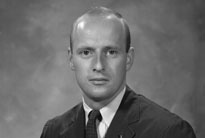 Charles “Pete” Conrad, Jr.
Capsule Communicator
Charles “Pete” Conrad, Jr.
Capsule Communicator
A naval aviator and test pilot before joining NASA, Pete Conrad was selected as an astronaut in September 1962, and first flew as pilot of Gemini 5, going on to fly three more times including commanding Apollo XII, the second lunar landing, before leaving NASA and the Navy for roles in industry.
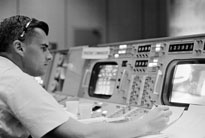 Roger B. Chaffee
Capsule Communicator
Roger B. Chaffee
Capsule Communicator
Selected as a NASA astronaut in September 1963 following six years in the US Navy, Roger Chaffee was involved in flight control communications systems and instrumentation systems for the Apollo program. He was selected as a pilot for the first crewed Apollo flight, but died on 27th January 1967 in the launch pad test fire during preparation for that mission.